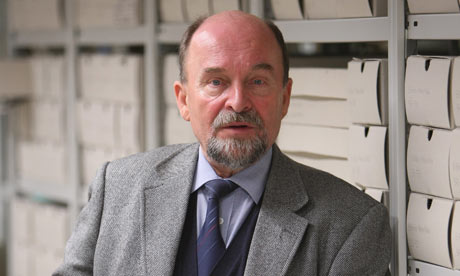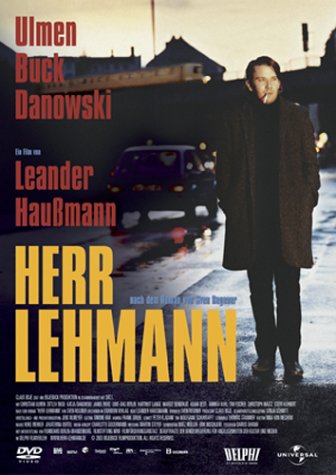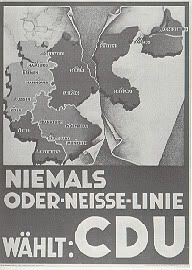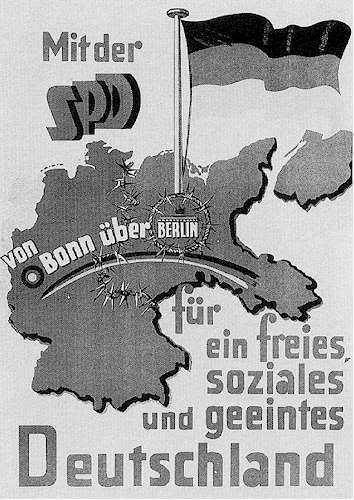"It was a weird wall.
Like the Möbius strip,
it had only one side,
the other was unseen:
the far side of the Moon."
- It was a Weird Wall by Vera Pavlova, translated by Steven Seymour
http://www.nytimes.com/interactive/2009/11/08/opinion/08berlinpoems.html?8dpc
"Whether 'home' is imagined as the community of Europe or of the national state or of the region, it is drenched in the longing for wholeness, unity, integrity" (Morley and Robins, 1996, in Mitchell)
Title: Two Bears of Berlin (working title)
Theme: The changes in Germany since the unification 20 years ago, with differences of perceptions ("the Wall in the mind") that still exist. Highlighting the perceptions of former-East and -West Berliners through the eyes of two bears (which represent Berlin) the readers will acknowledge that the existence of different opinions in a pluralistic society is a positive cultural state.
Time span: From the morning when the bears wake up, until they go back to sleep (or hibernation) in the night. April?
Characters: A female bear from East Berlin and a male bear from West Berlin. I'm going to call them Katarina (K) and Fritz (F) for now. They have just woken up from 20 years' hibernation (their relationship is similar to that of left and right brain, inseparable yet diverse). They are very different. Katarina only knows East Germany, where the state controlled a large part of life and also providing a lot; Fritz is more comfortable with individualist and materialist cultures, and doesn't rely much on other people. So... Katarina might be upset because the price of honey has doubled, and Fritz would complain that there are only 8 brands of honey; Katarina talks to her neighbors a lot, and Fritz won't care much about them... things like that.
Some stereotypes of East and West Berliners: http://www.dw-world.de/dw/article/0,,3927596,00.html
Ideas and resources:
The idea of a person waking up into a completely changed world is also seen in the film, Goodbye Lenin!
The film The Lives of Others talks about the life of a secret police officer before and after the opening of the Berlin Wall.
Fatherland is a story of a musician who defects to West germany and looks for his father.
The Wings of Desire is about an angel who wants to become a person, and is set in Berlin during the Wall.
The story
Berlin, 2010 - two bears, Katarina and Fritz, have woken up from their hibernation. Katarina and Fritz have never met before, although they lived on a same hill. In fact, they only lived few metres away from each other. This is because there used to be a long wall that separated the hill, but Katarina and Fritz have overslept a little. They have been sleeping for more than 20 years, so they didn’t know anything about the events in 1989 which opened up the wall and changed their hill.
---
Title
---
A short introduction
---
P1
It was a bright cold day in April, and it was nearly noon.
[Fritz wakes up, scratching his ass, when he sees Katarina coming out of her house/hole. They look at each other, embarrassed]
---
P2
"Who are you?", asked F. "And what are you doing on my field?"
[K] "I've lived here ALL my life. This is my field, and this is my house, right next to the...
---
P3
"Where is the Wall?"
---
P4
"You mush have been a sleep for a long time," said an old voice from below.
[a mole comes out of the ground]
"The Wall has been gone for more than 20 years now" said the mole. "East Bearland is gone too", he continued, "Now there's just one Bearland".
---
P5
K + F: "WOW!"
For as long as they knew, the Bearland had been divided into two, East and West. Neither of them could imagine that two Bearlands would ever be together.
K, excitedly: "I'm free now. I'm going to see what's on the other side."
---
P6
[a street with lots of adverts and posters]
There are so many adverts" said K, a little shocked. "But", interrupted F, "that's because there are lots of shops." "And lots of food", he added.
---
P7
K: "But why do you need so much?" One official brand was enough for K, and she grew up that way. One official brand was enough for K, she'd grown up that way.
[a loud car drives pass K]
K: "And, there are too many cars." Bears had to wait for 5 years in East Bearland to get a car, but K would always get a lift from her neighbours. Lots of bears living on her street shared that car.
When refering to 'that car' I think the audience would need some frame of reference to remember back to - even if it was just a picture of the car in a memory bubble as K remembers it? Otherwise the sentence should say something like, 'that beat up car,' or 'that little Ford Fiesta'...Or some native car to Berlin. does this make sense to you? Like, giving some description so it doesn't feel like there's missing information.
I'm picky - it might not matter.
---
P8
K wondered how many years bears had to wait in West Bearland. "It's not West Bearland any more" K thought to herself. There was just one Bearland.
F: "Here, you don't have to wait when you buy a car" siad F confidently, interrupting her thoughts. "And they go MUCH faster than any cars made in East Bearland!" he claimed, triumphantly. "You can go anywhere, fast!"
---
P9
K wondered how her father was doing. Her father had wanted to buy a car. Usually, the bears had to wait for 5 years for their car to be delivered, but because K's father was an official of the Bearland government, he was told he only had to wait for 3 years. "But" K thought, if there was no East Bearland, he wouldn't have a job any more.
---
P10
"If no bears had jobs, how can they afford to pay for their cars?"
[K looks at F] "I bet he doesn't have a job" thought K.
---
P11
F was starting to worry too, because K kept looking at him in a strange way. "Maybe she works for the Secret Bear Police." F had heard about the Secret Bear Police in East Bearland (but he didn't know it had dissapeared with East Bearland). K continued to look around. Are you keeping the brackets here? Yup.
---
P12
They were both a bit tired of each other.
---
P13
K and F stopped, and looked up the Wall. The Wall that cut the Bearland into two, and seperated bear families, for years and years... but this bit of the Wall just stood there. No bears seemed to notice the Wall. Now it was just like a normal wall.
---
P14
They looked at the Wall. K saw the clouds move slowly across the sky. F noticed the birds singing, and playing together. "I wonder which bird is from the East and which from the West". The sky was never divided by the Wall.
---
P15
K felt a bit of Spring wind on her fur [which swirls around her, brushes pass F, plays with blossoms and then goes over the Wall. F gives a long sigh]
---
P16
[and then, they they see a group of bees fly over the Wall. they make patterns in the air. Bears' stomach growl. they look at each other and smile]
The bees had always flown over the wall to make honey.
---
P17
[the sun is starting to set]
"I'm really hungry" they both said, [look surprised] and smiled again. They hadn't had anything to eat for a long time. They'd been walking and looking around since they met - and arguing.
---
P18
"Let's go home and eat some honey" said F.
---
P19
There were lots of things they wanted to talk about.
---
P20
[stars in the sky]
So they headed back home.
Tomo, this is so CUTE! Hope I haven't added too much. I've only done a quick look of it and written about the things that jump out at me. It's not my story though, and don't want to feel like I'm taking over, sorry if some of the comments look a bit fierce. Let me know if you don't like what I've been saying though. Oh, and sorry that what I've written is a bit hard to find x






















